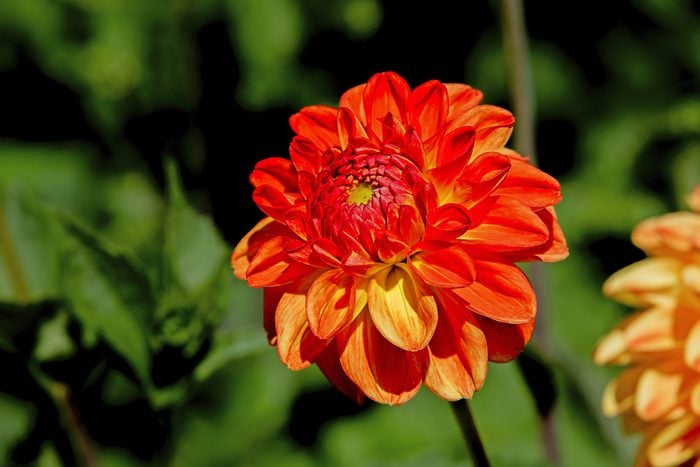
Orange Flowers: Orange Nugget Dahlia
Dahlia
Zones 8 to 10 or Annual
With electric orange flowers on full display during midsummer, Orange Nugget dahlia provides magic to a moist, well-draining garden. It needs full sun to produce at its best, though it can tolerate partial shade. It’s an excellent cut flower for arrangements or a vase.
Why we love it: The shorter stature of this vibrant dahlia, reaching somewhere between 20 and 28 inches high, has a consistent, attractive appearance when planted with a tall thriller and a cascading spiller in a large pot.
Check out the top 10 pink and orange flowers that look just like a sunset.
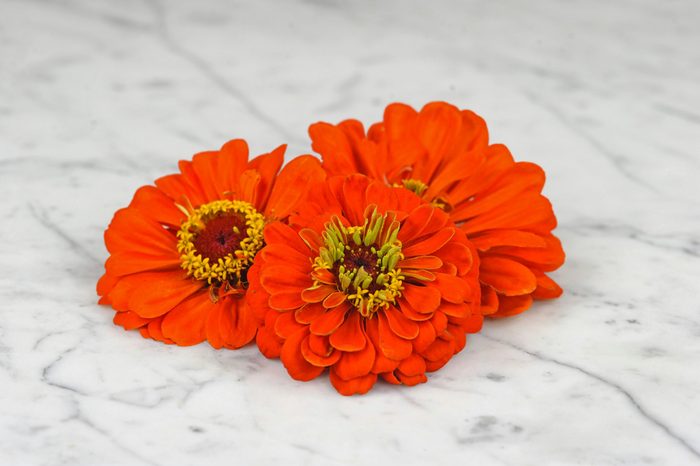
Orange King Zinnia
Zinnia elegans
Annual
Native to Mexico, this zinnia creates a focal point in a sunny garden and provides a show from summer into fall. The large double-bloom flowers grow to 4 to 5 inches wide, and the eventual seed heads resemble sunflowers.
Why we love it: A parade of pollinators, including hummingbirds, bees and butterflies, may stop by, making the zinnia a garden treasure.
Check out the top 10 red flowers that attract hummingbirds.
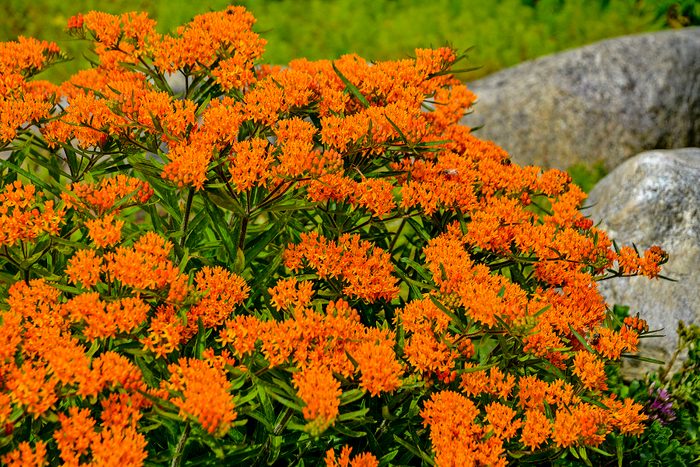
Butterfly Weed
Asclepias tuberosa
Zones 3 to 9
Monarch butterflies, bees and other pollinators love this member of the milkweed family. Intense orange clusters provide fine texture within a sunny border. If planted in a meadow setting, butterfly weed will naturalize and come back year after year. The seedpods are perfect for fall floral designs.
Why we love it: It grows in poor, dry soils and on slopes to prevent erosion. As a bonus, it’s typically disease-free and deer resistant.
Don’t miss the top 10 butterfly host plants to attract pollinators.
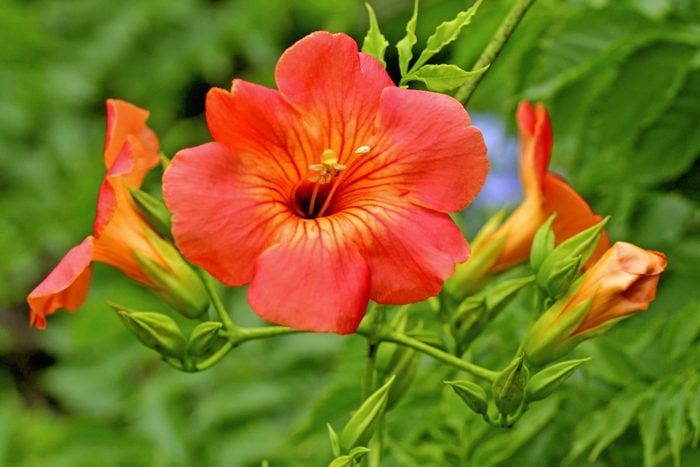
Trumpet Vine
Campsis radicans
Zones 4 to 9
This twisty vine with a clinging habit prefers pergolas or arbors to climb. The compound leaves have attractive leaflets that turn yellow in fall. Pruning each spring keeps a mature plant in check, and flowers emerge on new growth.
Why we love it: Tubular reddish orange flowers full of nectar sit above the native vine, making them highly visible and desirable to hummingbirds and helpful bugs in summer.
Psst—we found the top 10 classic yellow flowers to grow.
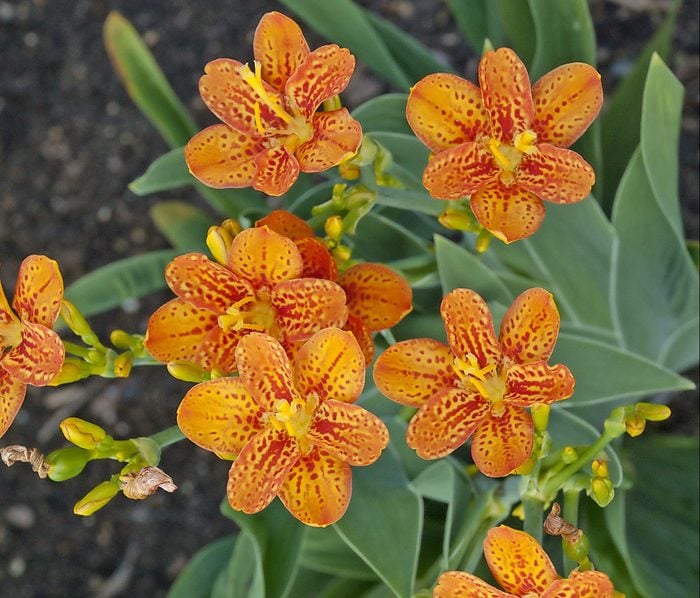
Freckle Face Blackberry Lily
Iris domestica
Zones 4 to 10
Freckle Face’s rich orange blossoms appear in late summer and are followed by seedpods that burst open to reveal a blackberry-like fruit, which gives the plant its common name of blackberry lily. In drier soils this iris will grow 24 inches, or up to 48 inches in more moist soils.
Why we love it: The orange flowers are butterfly magnets and stand out as a garden conversation piece.
Check out the 10 best purple flowers to grow in your garden.
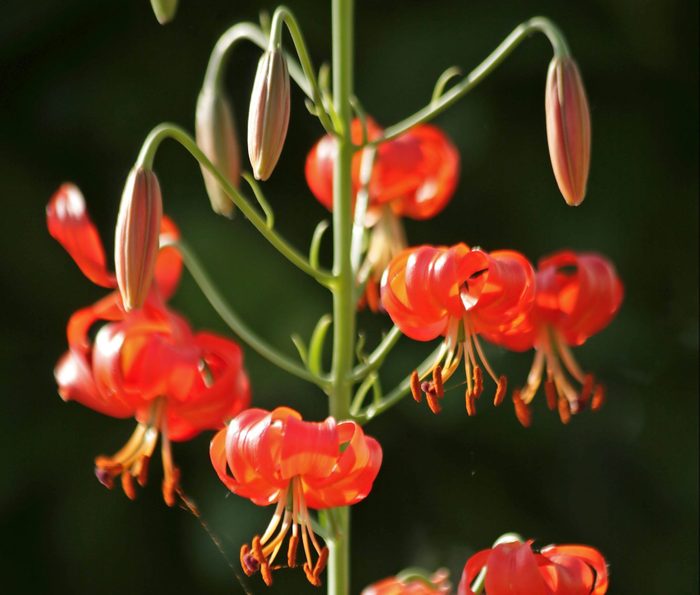
Coral Lily
Lilium pumilum
Zones 3 to 8
Enjoy this lily’s fragrant, abundant 2-inch-wide blooms starting in the early summer. For best results, plant it in moist, well-draining soil. Bees will love to stop by for a visit, too.
Why we love it: The fiery red-orange flowers warm a cool, partially shaded garden and add vibrancy to a sunny border.
Don’t miss the top 10 beautiful lily flowers to love.
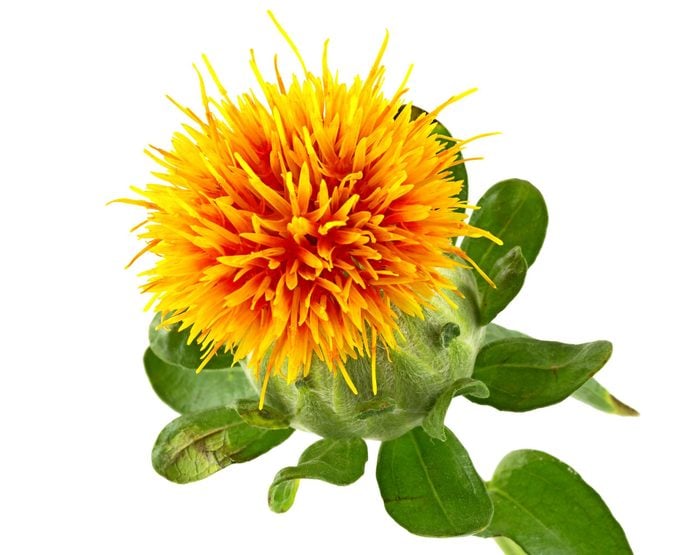
Safflower
Carthamus tinctorius
Annual
The thistlelike flowers appeal to a plethora of pollinators while the seeds may entice a range of birds (but squirrels leave them alone). Flowers vary in color from deep orange to yellow, perfect for fresh or dried arrangements. As a water-wise plant, it can withstand dry environments once established.
Why we love it: Safflower reseeds itself, making it ideal for open areas or meadow plantings. Plus, safflower seeds are one of the many ways to attract northern cardinals.
Check out the top 10 seed-bearing plants.
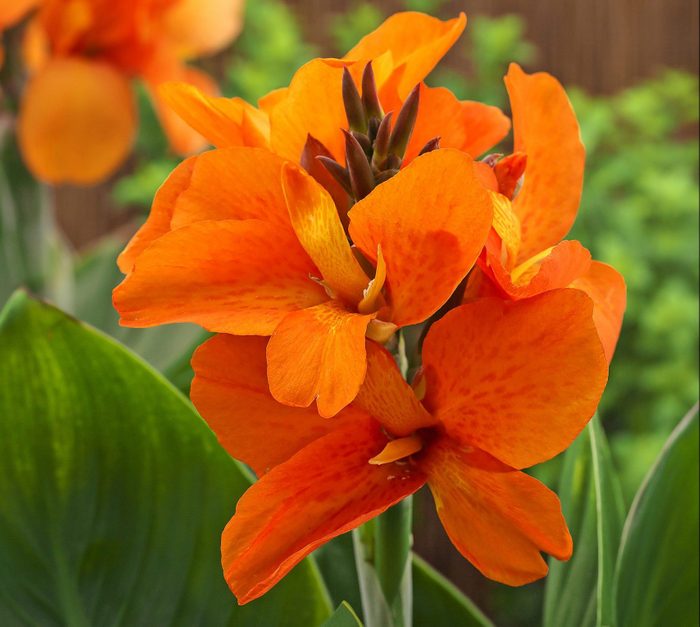
South Pacific Orange Canna
Canna generalis ‘South Pacific Orange F1’
Zones 8 to 11
Unlike many other cannas, South Pacific Orange is grown from seed and not from rhizomes, reducing disease issues. Add it to a container or the middle or back of a border garden. Pots can also be plunged into a shallow water garden to pump up the tropical interest.
Why we love it: This canna was an All-America Selections Winner in 2018 and sports glowing orange blooms that span over 4 inches wide.
We found beautiful blue flowers for every garden.
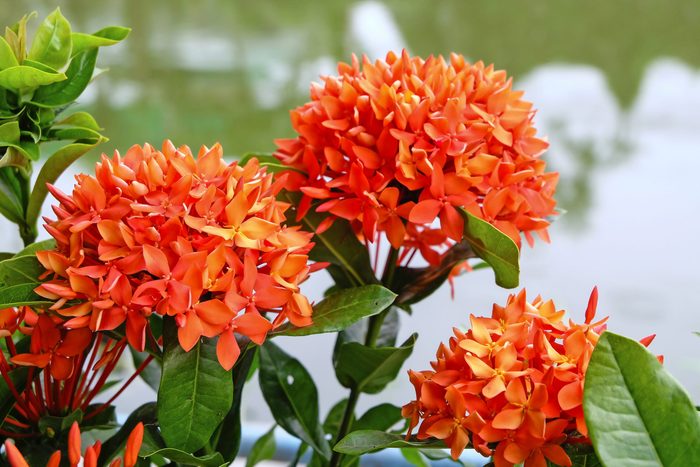
Flame of the Woods
Ixora coccinea
Zones 9 to 10
An excellent annual in the north, flame of the woods is flawless in containers. It produces brilliantly bold, tubular blooms in full sun and prefers to be kept evenly moist in acidic soils. Plant directly in the ground as a border plant for a spectacular show.
Why we love it: Gardeners in warm regions can enjoy this pollinator-friendly plant all year long. Plus, it’s a lovely hedge option and it rarely needs pruning.
Check out gorgeous green flowers for your garden.
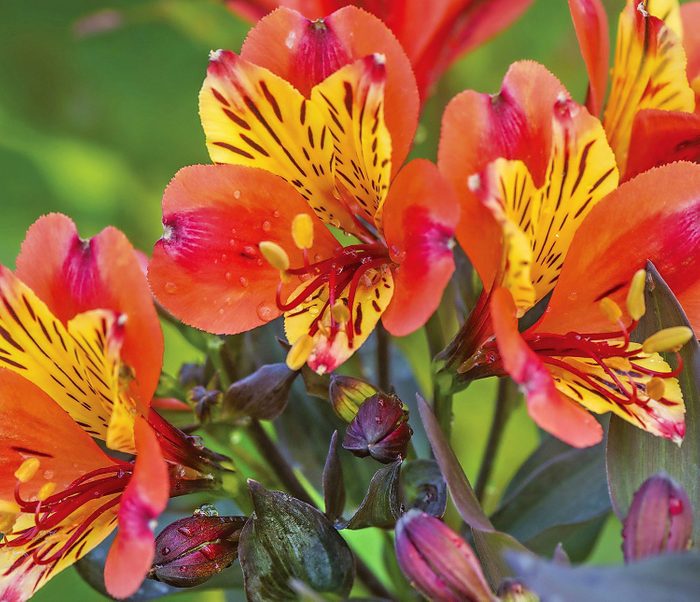
Indian Summer Peruvian Lily
Alstroemeria ‘Tesronto Imp’
Zones 6 to 9
This resilient border option blooms from summer through fall and is typically ignored by deer. Indian Summer can be potted with other flowers or featured all on its own. It returns year after year when kept in well-draining soil in a sunny location.
Why we love it: The flowers stay fresh for two or more weeks in a vase arrangement. For best results, pull (don’t cut) flower stems when they first open.
Next, check out late-blooming fall flowers that attract butterflies.
